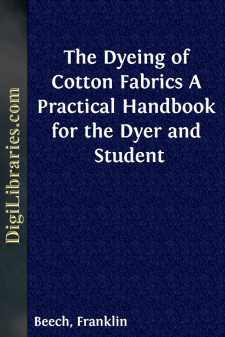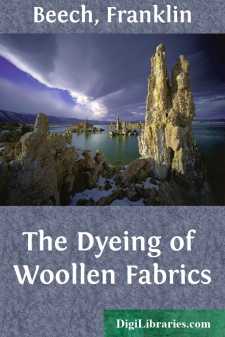Categories
- Antiques & Collectibles 13
- Architecture 36
- Art 48
- Bibles 22
- Biography & Autobiography 813
- Body, Mind & Spirit 142
- Business & Economics 28
- Children's Books 15
- Children's Fiction 12
- Computers 4
- Cooking 94
- Crafts & Hobbies 4
- Drama 346
- Education 46
- Family & Relationships 57
- Fiction 11828
- Games 19
- Gardening 17
- Health & Fitness 34
- History 1377
- House & Home 1
- Humor 147
- Juvenile Fiction 1873
- Juvenile Nonfiction 202
- Language Arts & Disciplines 88
- Law 16
- Literary Collections 686
- Literary Criticism 179
- Mathematics 13
- Medical 41
- Music 40
- Nature 179
- Non-Classifiable 1768
- Performing Arts 7
- Periodicals 1453
- Philosophy 64
- Photography 2
- Poetry 896
- Political Science 203
- Psychology 42
- Reference 154
- Religion 513
- Science 126
- Self-Help 84
- Social Science 81
- Sports & Recreation 34
- Study Aids 3
- Technology & Engineering 59
- Transportation 23
- Travel 463
- True Crime 29
The Dyeing of Cotton Fabrics A Practical Handbook for the Dyer and Student
by: Franklin Beech
Categories:
Description:
Excerpt
STRUCTURE AND CHEMISTRY OF THE COTTON FIBRE.
There is scarcely any subject of so much importance to the bleacher, textile colourist or textile manufacturer as the structure and chemistry of the cotton fibre with which he has to deal. By the term chemistry we mean not only the composition of the fibre substance itself, but also the reactions it is capable of undergoing when brought into contact with various chemical substances—acids, alkalies, salts, etc. These reactions have a very important bearing on the operations of bleaching and dyeing of cotton fabrics.
A few words on vegetable textile fibres in general may be of interest. Fibres are met with in connection with plants in three ways.
First, as cuticle or ciliary fibres or hairs; these are of no practical use, being much too short for preparing textile fabrics from, but they play an important part in the physiology of the plant.
Second, as seed hairs; that is fibres that are attached to the seeds of many plants, such, for instance, as the common thistle and dandelion; the cotton fibre belongs to this group of seed hairs, while there are others, kapok, etc., that have been tried from time to time in spinning and weaving, but without much success. These seed hairs vary much in length, from ¼ inch to 1½ inches or even 2 inches; each fibre consists of a single unit. Whether it is serviceable as a textile fibre depends upon its structure, which differs in different plants, and also upon the quantity available.
The third class of fibre, which is by far the most numerous, consists of those found lying between the bark or outer cuticle and the true woody tissues of the plant. This portion is known as the bast, and hence these fibres are known as "bast fibres". They are noticeable on account of the great length of the fibres, in some cases upwards of 6 feet, which can be obtained; but it should be pointed out that these long fibres are not the unit fibres, but are really bundles of the ultimate fibres aggregated together to form one long fibre, as found in and obtained from the plant. Thus the ultimate fibres of jute are really very short—from 1/10 to 1/8 of an inch in length; those of flax are somewhat longer. Jute, flax, China grass and hemp are common fibres which are derived from the bast of the plants.
There is an important point of difference between seed fibres and bast fibres, that is in the degree of purity. While the seed fibres are fairly free from impurities—cotton rarely containing more than 5 per cent.—the bast fibres contain a large proportion of impurity, from 25 to 30 per cent. as they are first obtained from the plant, and this large quantity has much influence on the extent and character of the treatments to which they are subjected.
As regards the structure of the fibres, it will be sufficient to say that while seed hairs are cylindrical and tubular and have thin walls, bast fibres are more or less polygonal in form and are not essentially tubular, having thick walls and small central canals.
The Cotton Fibre.—The seed hairs of the cotton plant are separated from the seeds by the process of ginning, and they then pass into commerce as raw cotton....



